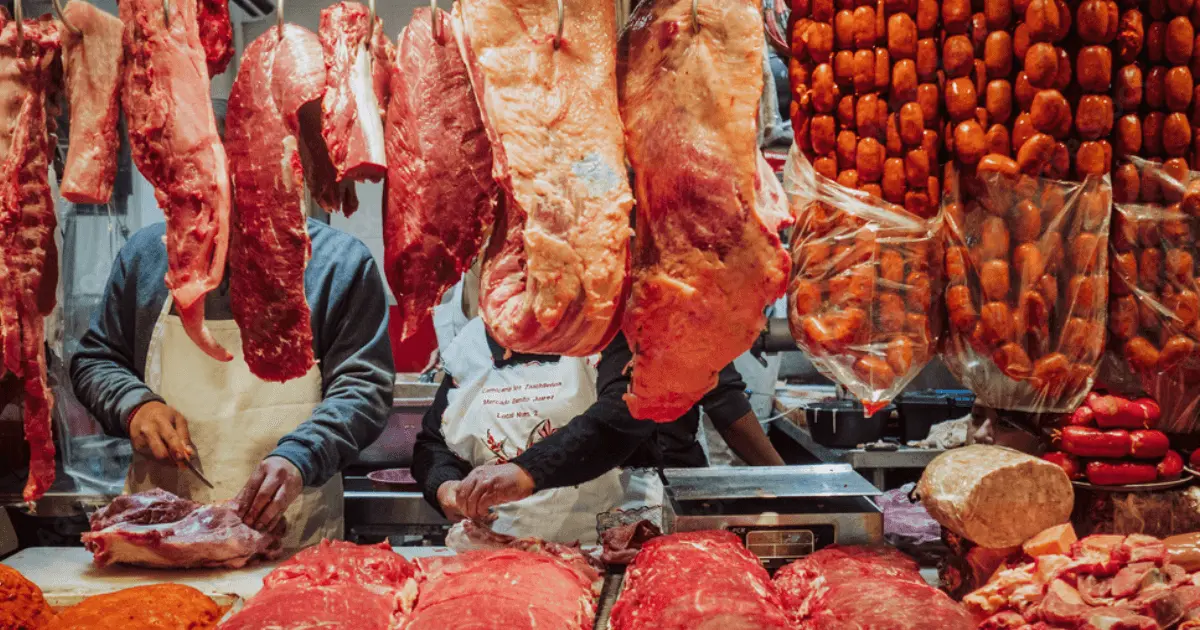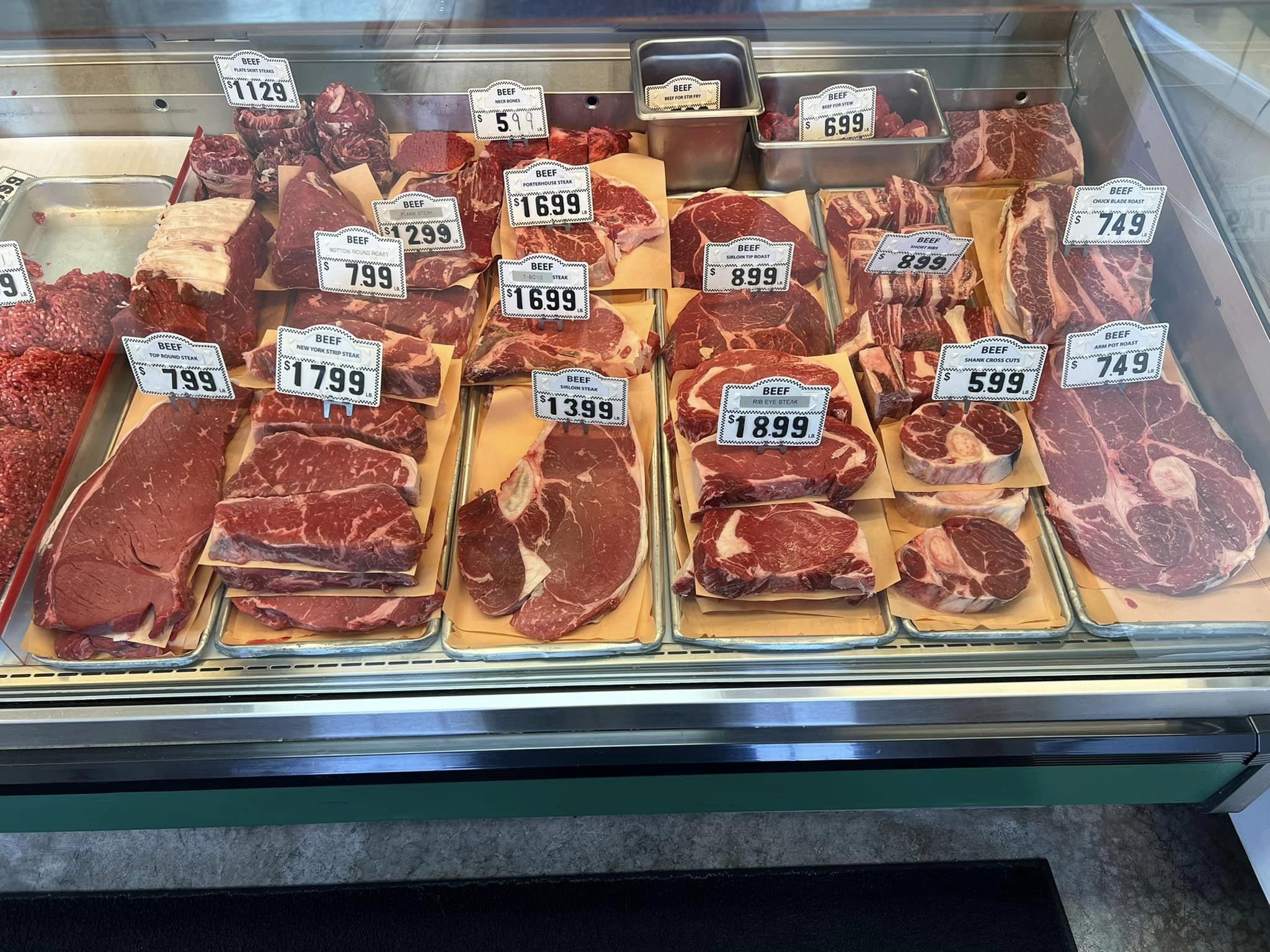Reveal the Art of the Butcher's Cut in a Modern Meat Market
In the ever-evolving landscape of contemporary meat markets, the butcher's cut has actually transcended its standard roots, merging age-old craftsmanship with contemporary methods. Today's butchers are not simply cpus of meat; they are educated craftsmens that highlight sustainability and honest sourcing. Their expertise in choose and preparing cuts customized to details cooking requirements provides an unequaled eating experience. What genuinely establishes the modern-day butcher apart is their ability to forge a much deeper link in between consumers and the beginnings of their meat. Just how do these masters balance practice with innovation, and what implications does this have for the future of meat usage?
Evolution of Butchery Methods
The evolution of butchery techniques reflects a rich tapestry of technology and adjustment driven by developments in technology, changes in consumer need, and a deeper understanding of meat science. Historically, butchery was a craft gave through generations, with techniques honed over centuries to make the most of return and flavor. Nevertheless, the commercial revolution introduced automation, transforming typical practices and allowing large processing.
The mid-20th century saw butchery strategies further improved by clinical insights into muscle mass biology and meat aging, boosting both inflammation and taste. Developments like vacuum cleaner packaging and refrigeration extended product shelf-life, permitting butchers to expand offerings and enhance quality assurance. This duration additionally marked the rise of specific tools, such as band saws and meat slicers, which raised precision and efficiency in meat processing.

Computerized systems currently aid in tracking pet provenance and enhancing cuts to satisfy specific consumer choices. Additionally, a revival in artisanal butchery has arised, blending traditional abilities with contemporary knowledge to provide to consumers seeking honest and lasting meat choices.
Recognizing Meat Cuts
Understanding the details of meat cuts is vital for both butchers and customers seeking high quality and worth. For butchers, accurate cuts show ability and respect for the craft, making sure marginal waste and optimal yield.

Understanding muscular tissue make-up is crucial; muscles made use of a lot more frequently by the pet often tend to be harder and are best matched for sluggish cooking approaches, while less-used muscle mass, like those found in the loin, are more tender and perfect for grilling or roasting. Knowledge with these distinctions encourages customers to make informed selections, Full Report improving their cooking ventures.
Selecting Top Quality Meat
Choosing the ideal meat entails more than just choosing an aesthetically enticing piece from the screen. The art of picking top quality meat requires a discerning eye and expertise of specific characteristics that indicate quality and excellence.
Secondly, think about the marbling, which describes the white streaks of fat within the muscle. Proper marbling is a crucial sign of inflammation and taste, as it thaws during food preparation, improving the meat's juiciness. Bear in mind, higher marbling usually associates with premium high quality cuts, such as USDA Prime.
Structure is one more essential factor; meat should feel firm to the touch, not slimy or overly soft. Additionally, be mindful of the fragrance. Fresh meat ought to have a clean, neutral smell, totally free from any type of sour or off-putting odors.
Pairing Cuts With Food Preparation Methods

On the have a peek here other hand, harder cuts like brisket and chuck roast are abundant in collagen, which breaks down into gelatin when prepared slowly. These cuts are excellent for braising or slow-moving roasting, allowing the meat to tenderize with time and develop deep, complicated tastes. Cuts such as brief ribs and pork shoulder make out well with slow-cooking methods, where prolonged cooking times transform their durable structures right into delicious recipes.
Lamb shanks and oxtail, which call for long term cooking to tenderize, are perfect candidates for stewing or slow simmering. These methods coax out rich, hearty flavors while preserving wetness. By recognizing the unique features of each cut, chefs and home cooks alike can raise their culinary creations, making sure each meal is both satisfying and memorable.
The Butcher's Duty Today
Browsing the developing landscape of the modern meat market, the butcher's function today extends past simple preparation of cuts. Contemporary butchers are cooking artisans, educators, and supporters for sustainable techniques. They connect the void between the ranch and the fork by making sure ethical sourcing, recognizing animal husbandry, and focusing on transparency in the supply chain. This change reflects the expanding consumer need for quality over amount, where provenance and animal well-being are extremely important.
In addition to crafting specific cuts, butchers now involve straight with More Bonuses clients, supplying cooking guidance and customizing selections to fit specific needs and preferences. Their know-how in meat aging, marbling, and flavor profiles encourages consumers to make enlightened decisions, boosting their culinary experiences. This individualized solution exemplifies the butcher's progressing duty as a trusted consultant in the cooking area.
Additionally, butchers are crucial in reducing waste, using entire pets to create diverse items such as sausages and supplies. This comprehensive method not only values the pet yet also lines up with contemporary sustainability goals. In this way, the contemporary butcher embodies both custom and technology, adjusting to an ever-changing market while preserving the creativity and honesty of their craft.
Verdict
The contemporary butcher's craft elaborately weaves typical techniques with modern developments, emphasizing lasting techniques and moral sourcing. Proficiency in recognizing varied meat cuts and high quality indications equips butchers to supply educated suggestions, lining up particular cuts with ideal cooking techniques. This know-how not just boosts culinary experiences however also strengthens the link in between consumers and the origins of their food. By recognizing historic methods while accepting contemporary needs, the butcher's function stays important in today's sophisticated meat market (bagley farms meat market edwardsville il).